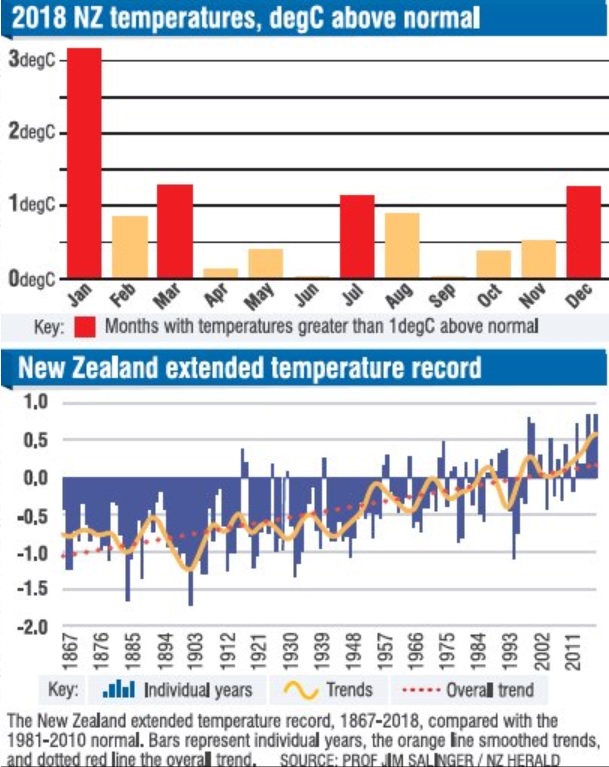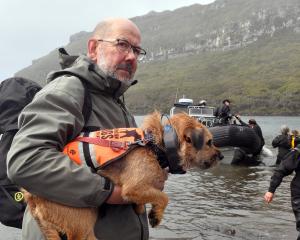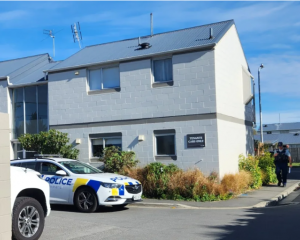
Niwa is not due to release its official summary for the year until early next week, but honorary research fellow at the University of Otago professor Jim Salinger has already picked it as the warmest yet, from records stretching back to 1867.
His calculations put 2018's mean annual land surface temperature at 13.5degC (or 0.85degC) above the 1981-2010 average.
His figure also surpassed the scorching years of 1998 and 2016, which were 0.8degC and 0.84degC above normal respectively.
Niwa meteorologist Chris Brandolino said people would have to wait until next week to see the climate agency's final numbers, but with the addition of Niwa's preliminary figures showed 2018 tracking extremely close to 2016's record.

"January, March, July and December were all at least 1degC above normal, with January being a massive 3.2degC above average - the hottest month ever," Dr Salinger said.
The record warmth of 2018 was accompanied by warm seas around the country.
"For all months of the year sea surface temperatures around New Zealand were well above average, with preliminary estimates for 2018 being 0.8 degrees above average."
Even as 2018 began, it was in the grip of a marine heatwave caused by a freak combination of factors and which turned the Tasman Sea into a warm bath, fired the record summer, and lured swarms of jellyfish to our shores.
"The heat of 2018 was also demonstrated by the record loss of ice on the Southern Alps," he said.
"We measured a 9% drop in just one year. That says it all. We've never had anything like that in the glacier record."

"And more heating is predicted for 2019, by the UK Met Office," Dr Salinger said.
"Their 2019 forecast indicates that the year 2019 will be close to a record due to global heating and the added effect of the El Nino in the tropical Pacific."
Dr Salinger said that with six of our warmest years falling in the last two decades, the hand of climate change was unequivocal.
The average temperature had become 1.3degC warmer over 151 years of records.
"It's roaring away," he said.
He highlighted the UN's recent report warning that the world had little over a decade to limit global warming to 1.5degC above pre-industrial levels - and only around two decades to hold the Paris Agreement's symbolic 2degC line.
"We have to get going now and make significant inroads in the next years - there's now a global movement of youth calling for that."
Niwa's latest seasonal outlook, covering summer, predicted temperatures were equally likely to be near or above average until the end of February, and rainfall near normal for most regions.












